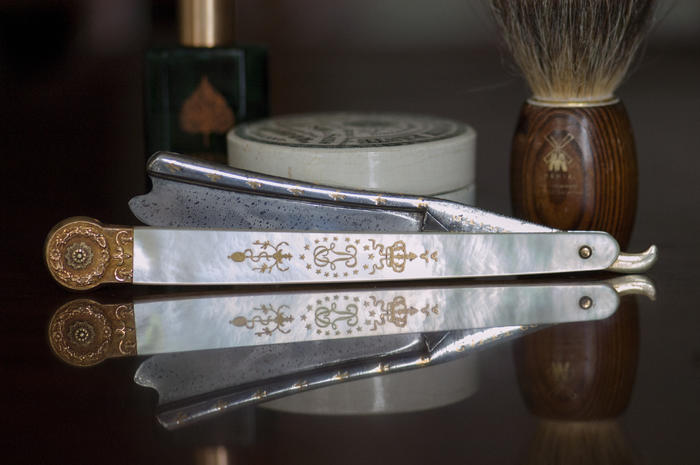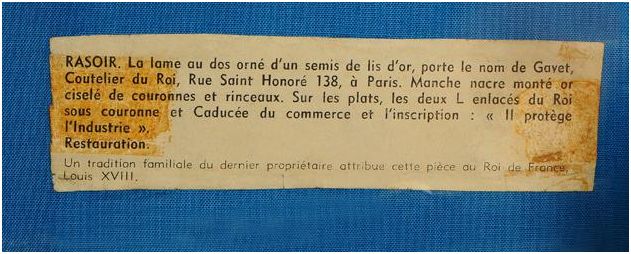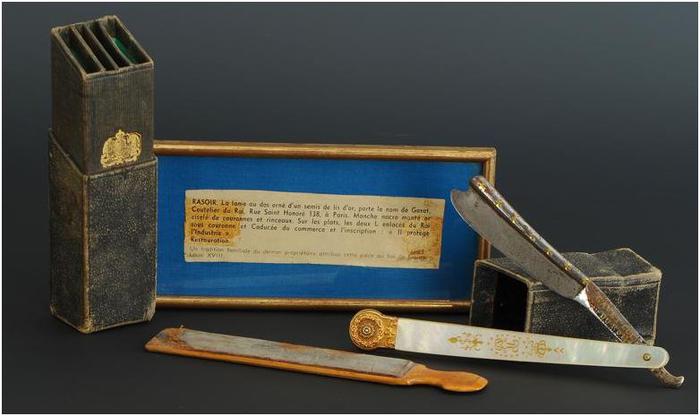Results 31 to 40 of 42
Thread: Early 1800s Gavet in MOP
-
09-09-2016, 05:06 PM #31
-
09-09-2016, 05:21 PM #32

"Some FBUs..."...yikes!! :-)
I'd even part with a couple for that frame backed French beauty...and the similar one Thaeris has in Tortoise...going to have to step up my game in terms of filters and searching...after the Ottoman, it's good to find a purpose again...'-)
-
09-09-2016, 09:13 PM #33

I wish I had it !
 My friend does !
My friend does !
-
09-10-2016, 02:06 AM #34Historically Inquisitive



- Join Date
- Aug 2011
- Location
- Upstate New York
- Posts
- 5,782
- Blog Entries
- 1
Thanked: 4249
-
09-10-2016, 03:15 AM #35Senior Member

- Join Date
- Aug 2013
- Location
- NYC, NY
- Posts
- 1,496
Thanked: 169
That's one of the most spectacular pieces I have seen on this forum
-
09-10-2016, 04:20 PM #36
-
09-10-2016, 06:51 PM #37Senior Member

- Join Date
- Feb 2014
- Posts
- 225
Thanked: 36
Wow! that is just simply stunning!
-
09-11-2016, 10:41 PM #38

Some more shots playing with better lighting and some composition.


-
-
12-03-2017, 05:22 PM #39Junior Member

- Join Date
- Mar 2012
- Location
- Switzerland
- Posts
- 7
Thanked: 0 “Damas grain de riz” (rice grain damacus)
“Damas grain de riz” (rice grain damacus)
Hello,
I have some questions about this beautiful razor. After you cleaned the active rust off the blade the reddish rust marks seem to have turned to whitish, dark, or silvery dots. Any idea what causes this reaction? Did you have this kind of sprinkles on other razor blades after cleaning?
A member of the « coupe chou club » thinks that the blade is made of “Damas grain de riz” (rice grain damacus) according to the research on indian wootz. I have never heard about a wootz pattern called rice grain or seen a wootz blade with such a pattern. From what I can see on the pictures you posted I don’t think that the blade is made from wootz. I think the “marks” on the blade are caused by a chemical reaction produced when removing the rust marks and are not the result of crystallisation.
In the written sources of the first quarter of the 19th Century I did not find any indication that Gravet forged “Damascus” razor blades like some of his French contemporaries.
What’s your opinion on this?
Could you post some close up pictures of the dots, for further examination?
Thank you, regards
Richard R.
-
12-04-2017, 04:39 PM #40


 81Likes
81Likes LinkBack URL
LinkBack URL About LinkBacks
About LinkBacks








 Reply With Quote
Reply With Quote

 It's said this one was a gift or a homage to a french king, but sadly most of the information is missing from the picture. Could be Louis XVIII or Charles X.
It's said this one was a gift or a homage to a french king, but sadly most of the information is missing from the picture. Could be Louis XVIII or Charles X.


